Ritual Warfare Depicted in Moche Art Was a Real Practice?
Terracottas figurines with representations of musicians are a privileged field of investigation in agreement the importance of music in both its production and performative contexts. Figurines of male and female musicians are emblematic of the close link betwixt musical practice and the sacred and ritual spheres. They contribute non only to the reconstruction of what music and the production of music meant for aboriginal societies, but also provide information apropos the human relationship of performance to the deities, and about which musical instruments were best suited to the particulars of diverse ritual occasions, including sacred and funerary contexts.
The analysis of terracotta figurines volition take into account the presence and characteristics of different musical instruments, gestures, positions, and the habiliment of both male and female musicians. The goal is to sympathize the condition of the musicians and to translate their musical and symbolic significance. Additionally, the terracottas volition exist analyzed in relation to the development of musical culture and their wider historical and social context.
These topics will be addressed through contributions by scholars working in diverse fields: archaeology, art history, musicology, history of religion, and anthropology.
The organizing commission includes:
Angela Bellia, Università di Bologna - New York University
Claude Calame, École des Hautes Études en Sciences Sociales de Paris
Barbara Kowalzig, New York University
Clemente Marconi, Institute of Fine Arts, New York University
Donatella Restani, Università di Bologna
Jaimee Uhlenbrock, Association for Coroplastic Studies

Claude Calame, École des Hautes Études en Sciences Sociales (Heart AnHiMA: Anthropology and History of the Ancient Worlds), Paris
Choral Songs of Girls in Preclassical Sparta:
Poetic Performance, Rhythmical Rituals, Musical Arts, Gendered Identities
The song and trip the light fantastic toe culture of Ancient Greece, particularly in preclassical Sparta, offers many melic poems corresponding to choral songs ritually performed on the occasion of the different stages of an educational cursus, erotic, religious and social; it has an initiatory function To the different rhythms of the sung and danced operation (song rhythm, rhythm of the musical tune, metrical rhythm respective to a choreography and a gear up of gestures) has to be added the rhythm of the annual religious and civic calendar; it is made of the cultic festivals in which are inserted the rituals attached to the different stages leading young men and immature girls from instable boyhood to mature adulthood. This rythmical sung and ritual cursus can be highlighted in the reading of a «partheneion» song equanimous by the poet Alcman in Sparta and performed by a choral group of young women.
Claude Calame is Emeritus Director of Studies at the École des Hautes Études en Sciences Sociales (Center AnHiMA: Anthropology and History of the Aboriginal Worlds), Paris. Formerly he was Professor of Greek language and literature at the University of Lausanne. He also taught at the universities of Urbino and Siena in Italy, and at Yale University. In English language he published The Craft of Poetic Voice communication in Ancient Hellenic republic (Cornell University Press 1995), The Poetics of Eros in Ancient Hellenic republic (Princeton Academy Press 1999), Choruses of Young Women in Aboriginal Hellenic republic (Rowman & Littlefield, 2001, 2d ed.), Masks of Authority. Fiction and Pragmatics in Ancient Greek Poetics (Cornell Academy Press 2005), Poetic and Performative Memory in Ancient Greece (CHS – Harvard Academy Press 2009), Greek Mythology. Poetics, Pragmatics and Fiction (Cambridge University Press 2009).
Electronic mail: claude.calame@unil.ch
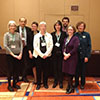
Annie Caubet, Louvre Museum, Department of About Eastern Antiquities, Paris
Musician Dwarves in Ancient Mesopotamia and Elam
A number of terracotta plaques of the early 2d millennium BC in Babylonia and Elam describe craftsmen engaged in their activeness, among them a number of lyre, lute and harp players. They provide excellent information on the shape and construction technique of these instruments. Their archaeological context are unknown and their office and meaning unclear: they may have been dedicated to the gods by musician votaries wishing to leave their mark; or past not musicians, in order to perpetuate the celebration of rituals accompanied by such musical instruments.
Virtually of these plaques, obtained from one mold pressed on the fresh clay, depict the figures seen in contour, in conformity with standard Mesopotamian iconography. A smaller group, however, testify a effigy seen en face, a common visual device for the depiction of supra man, magical figures. Non only is the head, simply the whole body is presented in front view, each leg extending outwards, knees flexed, boldly displaying the sexual parts. The proportions of the different components of the body, the overlarge big head, the shortened, distorted legs, are diagnostic traits of nanism, or dwarfs, who are rumored in popular belief to possess extra natural sexual power. In the visual arts of the ancient earth, these traits take been borrowed for the delineation of such fantastic figures as the wild man Humbaba in Mesopotamia, Bes in Arab republic of egypt and the Levant, Gorgon in Greece. A pregnant number of these terracotta dwarf figures of Mesopotamia and Elam are musicians: they are engaged in playing a lute, while their aptitude legs are shown to stand for a dancing movement, an illustration of the Biblical passage where David danced before the Ark, flexing his knees (Two Samuel vi, 15).
These dwarf figures are early illustration of the ambiguous status, both positive and repulsive enjoyed past music and musicians in the ancient world, examples of which are to be found in after grotesque musician figures from the Graeco-Roman world.
Annie Caubet is Honorary Curator at the Louvre Museum and headed the Section of Ancient Near Eastern Antiquities at the Louvre from 1988 to 2005. She curated numerous special exhibitions at the Louvre and at other museums, well-nigh recently Zervos et l'art des Cyclades, Zervos Museum, Vezelay, 2011. She is too a professor at the École du Louvre. She is a recent recipient of a Mellon Fellowship at the Metropolitan Museum of Art for 2013-2014 and a Glassman-Holland Fellowship at the W.F. Albright Establish in Jerusalem for 2010-2011. Her research interests have centered on the French excavation of Kition Bamboula (Cyprus) under the directorship of Marguerite Yon, in collaboration with Sabine Fourrier, Olivier Callot, and Yves Calvet. She has published numerous articles and books on aspects of ancient Most Eastern art and archeology, with particular attention to faience, ivory, precious stones, coroplastic material. Her latest papers on the archaeology of music appeared in Southward. Emerit (ed.) Le statut du musician, Le Caire 2013 and in J. Goodnick Westenholz, Y. Maurey, Due east. Seroussi, (éds.), "Music in Antiquity. The Near East and the Mediterranean, Yuval Studies of the Jewish Music Research Center VIII, Berlin, 2014. Her coroplastic interests are reflected in her role as editor for 50'art des modeleurs d'argile: antiquités de Chypre. Musée du Louvre. Coroplastique (by Sabine Fourrier, Anne Queyrel, and Frieda Vandenabeele, Paris, 1998) and Les figurines de Suse. Musée du Louvre (by Laurianne Martinez-Sève, Paris, 2002).
E-mail: annie.caubet@free.fr

Gabriela Currie, University of Minnesota, Twin Cities
The Monkeys of Yotkan and Their Musical Instruments: Iconographical Explorations
A large sample of hitting terra cotta figures (ca. 3rd-6th centuries) comes from Khotan, the aboriginal Buddhist kingdom on the co-operative of the Silk Road that ran along the southern edge of the Taklamakan desert (today Xianjiang, China). They came to the attending of European archeologists Sven Hedin and Aurel Stein at the turn of the twentieth century, during their explorations of the southern oases of the Tarim bowl. Nearly oft exposed by the spring floods from the archeological layers of what had been the capital of the kingdom, Yotkan, and sold past local peddlers in the bazaar, some of these figures may once accept served ritualistic functions, specially in the example of monkeys engaged in explicit sexual games, and those playing various musical instruments (several types of drums, short-necked lutes, and panpipes).
This paper argues that, while actual monkeys were never found in the Tarim bowl, the musical dimension of these small figurines strengthens the existing theory that the Khotan terracottas have a direct correspondence to Gandharan art, the Hellenistic-Buddhist synthesis created early on in the first millennium CE in the cultural spheres of the Kushan Empire. On the one hand, the monkey motif seems to relate to Buddhist Jakata stories, hence harkening dorsum to a possible Indian origin. On the other paw, most of the musical instruments these protagonists handle, particularly the short-necked lute and sure types of drums, are characteristic not of the Indian, just the Gandharan musical repertoire disseminated throughout the Kushan empire. As such, "the monkeys of Yotkan" stand witness to the intense cultural cosmopolitanism that marked the history of the Tarim basin in the outset part of the millennium CE.
Gabriela Currie is Associate Professor of Musicology at the University of Minnesota, Twin Cities. Her research interests encompass a wide range of subjects including medieval music thought in the Latin, Byzantine, and Islamic worlds; the intersection of music, religion, philosophy, science, and visual arts in pre- and early-modern European cultures; and pre- and early-modern Byzantine and Eurasian music iconography. She is the writer of The Play of Meanings: Aribo's De musica and the Hermeneutics of Musical Thought and of numerous articles that appeared in scholarly journals likewise as edited collections. Electric current piece of work includes a monograph study on mathematics, natural philosophy, theories of sound, and musical cosmologies at the crossroads of late scholastic thought; and several projects under the theoretical umbrella of pre-modern global intersections and patterns of Eurasian intercultural exchange.
Eastward-mail: ilnit001@umn.edu

Elçin Doğan Gürbüzer, Ege University-Izmir, Turkey
The Terracotta Figurines with Stringed Instruments from the Sanctuary of Apollo Clarios
The sanctuary of Apollo Clarios is located in Turkey, within the borders of what is currently known Ahmetbeyli, district of Izmir. Information technology was situated in Ionian region in antiquity. The establishment of the sanctuary lays back to 13th century BC and it was used continuously up to the late Roman period. The sanctuary which was dedicated to Apollo, the god of oracle, had received in large quantities of figurines every bit votive offerings from Sub-Mycenean Menstruation until Hellenistic Period. Among those figurines, the representations carrying stringed instruments on the left hand take a special importance. The so-called instruments are called lyra, kithara and barbitos. On the other manus, the figurine groups which are serial productions reverberate a stylistic progress within themselves. Somewhen, they should accept an important role in the cult activies of the sanctuary from the 2d one-half of the 6th century BC to the Hellenistic menses. The three instruments which differ from each other by means of their function and construction betoken the unlike cults as well. In this written report, the icongraphic and stilistic meanings of the figurines will be discussed, the difference of the instruments will be displayed and the functions of the figurines in the context of the sanctuary will exist examined.
Elçin Doğan Gürbüzer is an Assistant Professor of Classical Archaeology at Ege Academy in Izmir, Turkey, in the department of Tourism Guidance where she has been a faculty member since 2012. She received her B.Due south.and M.D. from the same university, department of Classical Archæology before completing her PhD with a thesis titled The Terracotta Figurines of Claros and their Evolution in the Scope of Cults. In contempo years she has been involved in several earthworks projects and has been a co-director of the Claros digging. Her research interests are terracotta figurines, iconography and cults. As she is likewise a professional tour guide, she gives lectures on applied tour guiding and also on archaeological topics, such as ancient settlements, the history of Anatolia and the ancient civilizations in Asia Small-scale.
E-mail service: doganelcin@hotmail.com
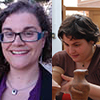
Mireia López-Bertran, Universitat Pompeu Fabra, Barcelona, Spain and Agnès Garcia-Ventura, Università di Roma La Sapienza, Italia
Performing Music in Phoenician and Punic Rituals: a Coroplastic Arroyo
The aim of the paper is to nowadays and analyze the sample of Phoenician and Punic (7th-2nd centuries BC) musician terracottae from some areas of the Western Mediterranean (Iberia, Ibiza and Carthage). It is our intention to study them keeping in mind three issues. First, we will depict the instruments represented and the trunk gestures that entail the practice of performing music with certain instruments. Secondly, nosotros volition contextualise them (chronology and identify of finding) to offer a comprehensive approach in guild to shed some light into both the presence of music in rituals and their possible utilize when performing rites. Thirdly, we want to recall our attending to their gender as they are mostly feminine. We will argue that playing music is an empowerment activeness for some Phoenician and Punic women.
Agnès Garcia-Ventura was awarded her PhD by the Universitat Pompeu Fabra (Barcelona, Spain) in 2012 with a thesis on the fabric product in Ur Three Mesopotamia. As Postdoc, she had a "Cloth Text Cultures Research Fellow" at the Collaborative Inquiry Center 933, "Material Texts Cultures", of the Rupert Charles University in Heidelberg (November 2012-May 2013). She also worked for i academic year as Banana Professor at the Universitat Autònoma de Barcelona (2013-2014). Since Oct 2014 she is "Beatriu de Pinós" Postdoc boyfriend at the La Sapienza, Università di Roma. Her primary areas of involvement are gender studies (peculiarly their application to Assyriology), historiography of Ancient Near Eastern studies in Spain, the organization of work in Mesopotamia and aboriginal musical performance (in both Mesopotamia and the Phoenician and Punic contexts).
E-mail: agnes.ventura@gmail.com
Mireia López-Bertran is Beatriu de Pinós/Marie Curie fellow at the Universitat Pompeu Fabra in Barcelona (Espana). She received her PhD degree in History from the Universitat Pompeu Fabra (Barcelona, Spain) in 2007. Her dissertation focused on Phoenician and Punic rituals in rural landscapes. Between 2010 and 2012 she was postdoctoral beau with the Spanish Ministry of Pedagogy and Culture—FECYT and Honorary Enquiry Fellow at the University of Glasgow, where she carried out a project about Phoenician and Punic dirt human figurines. She specialises in the Phoenician and Punic sites of the ancient Mediterranean, with research interests in embodiment, rituals and gender.
E-mail: mireia_lopez@hotmail.com

Regine Hunziker-Rodewald, Academy of Strasbourg
Rethinking Figurines – Females from Rabbath-Ammon and Beyond
Amidst the minor finds from the Fe Age II that have been discovered on the Citadel of Rabbath-Ammon were fragments of more lx female terracotta figurines (Database Franco-German language Figurines Project). 25% of these mass-produced figurines are presented as playing a decorated frame drum. These female musicians with big almond-shaped optics are nude or half-nude, prove their long curled hair and wear near often jewellery. When the lower body and the legs are preserved, the figurines' busy girdles can be seen and their multiple anklets that are supposed to accentuate the rhythm of the drums by a dancing gesture. The pubic region is strongly emphasized. The female musicians are typologically identical, but their concrete appearance and the quality of the dirt differ. To the due south of the Rabbath-Ammon region (Wadi ath-Thamad, Karak) similar or identical female musicians take been found that were attached on both sides of the archway of ceramic shrine models. This fact proves the cultic function of these figurines. Their significance has still to be explained, yet, it is highly probable that they were linked to the cult of the god El.
Regine Hunziker-Rodewald received her degrees from the universities of Zurich, Berne and Tubingen, and is professor of Old Testament Studies and the History of the ancient Near East at the Faculty of Protestant Theology of the Academy of Strasbourg. She is director of the joint French-German project focusing on the female terra cotta figurines of Atomic number 26 Age Ii Hashemite kingdom of jordan (FGFP). She too is leading a research seminar in collaboration with the TEO (Territoires et Empires d'Orient, UMR 7044-Archimède) Strasbourg team on the female figurines of the ancient Most East, Egypt, Nubia, and the Mediterranean from the 2d and first millennium BCE and is a member of the Organizing Committee of the International Colloquium "Nude Female Figurines. Ancient Virtually Eastward, Egypt, Nubia, Mediterranean (Neolithic period – tertiary century CE). Comparative and Contextual Studies," to be held on June 25-26, 2015 at the University of Strasbourg.
Eastward-postal service: rhunziker@unistra.fr

Kiki Karoglou, The Metropolitan Museum of Art, New York
Eros Mousikos
Departing from ii terracotta statuettes in the collection of the Metropolitan Museum of Art that represent Eros playing the kithara and the tambourine (MMA 17.230.46 and 06.1069 respectively), this newspaper will explore the iconography of Eros playing music and its possible meanings and ritual functions. Although flying Nikai and Erotes are among the most popular terracottas in the tardily Classical and Hellenistic period, this particular form of statuettes has non received closer attention. Since most are constitute in tombs, the newspaper volition examine how the effigy of Eros as a musician operates within the general framework of depictions of musical performance and dance in a funerary context.
Kyriaki Karoglou is Assistant Curator of Greek and Roman Fine art at the Metropolitan Museum of Fine art. Previously, she hold internships at the Getty Museum, The Princeton Fine art Museum, and the Athens Acropolis Museum and participated in numerous excavations and surveys in the Mediterranean. She is currently involved in the planning of an international loan exhibition organized past the Met'southward Greek and Roman department on "Pergamon and the Fine art of the Hellenistic Kingdoms," scheduled for jump 2016. Kiki did her undergraduate studies at the University of Athens, and received her Ph.D. from Princeton Academy with a dissertation on votive plaques defended in Attic sanctuaries of the Primitive and Classical periods, the basis for her monograph on Attic Pinakes (Oxford 2010). She is a recipient of many fellowships and grants and has taught courses on Greek Sculpture and Greek and Roman Art and Archaeology at the University of Toronto and The Higher of New Bailiwick of jersey. Her research focuses on Ancient Greek art with an accent on sculpture and the iconography of ritual.
East-mail: Kiki.Karoglou@metmuseum.org
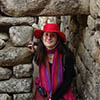
Daniela La Chioma Silvestre Villalva, University of São Paulo, Brazil
The Social Roles of Musicians in the Moche Earth: an Iconographic Assay of Their Attributes in Middle Moche Period'south Ritual Pottery
The social roles of musicians in the Moche earth: an iconographic analysis of their attributes in Middle Moche period'southward ritual pottery. The Moche inhabited the north declension of Peru during the Andean Early on Intermediate Period (0 - 700 A.D). One of the virtually distinctive features of Moche ritual pottery is the delineation of highly ranked individuals commonly described as priests, warriors, deities and supernatural beings. They are mainly present in Middle Moche Menstruation vessels (100 – 400 A.D) which were probably produced in a context of deep social and political transformation. Supposedly, a time marked by the ascension of some of the southern moche valley's elites. Information technology was precisely during this period that a large amount of musicians, playing a great variety of sound instruments, were recurrently depicted in artifacts such every bit figurines, whistles, stirrup spout bottles and jars. Interestingly, in many cases, they appear carrying the same ability attributes of high status individuals or garments of important supernatural beings. The similarity of the attributes carried by musicians and empowered individuals are hands recognized in the iconography of the ceramic archaeological vessels or in funerary contexts.
Detailed iconographic analysis shows united states of america that the musicians are nowadays in most of the of import ritual and political themes of the Moche iconography. They seem to maintain a very close relationship with the protagonists of the visual narratives of the moche world, such as the Presentation Theme, the Bicephalus Arch Theme, The Burial Theme, etc. In this communication nosotros intend to present iconographic data showing musicians who play panpipes, drums and rattles, comparing them to highly ranked characters depicted Moche art, in order to identify the instrument players' respective social roles in Moche club.
Daniela La Chioma Silvestre Villalva is a doctoral candidate in the Department of Archaeology of the Museum of Archaeology and Ethnology, University of São Paulo, Brazil. She holds a graduation in History (2007) and a Master'southward in Archaeology (2012) in the same University, in the expanse of Pre-Columbian Studies, namely Andean Art and Archaeology. Her research focuses on iconographic representations of sound, music and its players in Andean Fine art, emphasizing their social, political and religious roles and the symbolic pregnant of the instruments in Andean and Amerindian cosmovisions. I of the iconographic assay of Nasca musicians turned into a chapter in Stockli & Both'southward "Flower Globe: Music Archaeology of the Americas – Volume Ii" (2013), published in Berlin. In her PHd enquiry she is currently studying the political-religious roles of musicians in the northern coast of Peru, specifically in the Middle Moche flow, based on a databank of more than than 800 images of musicians, all depicted in Moche pottery. She has been doing fieldwork in Peruvian archaeological projects and studies of Peruvian Museum's collections since 2007, likewise every bit participating in Seminars and Conferences in Brazil, Europe and Republic of peru.
Eastward-post: danilachioma@gmail.com

Sara Marandola and Donata Sarracino, Academy of Rome La Sapienza
The Representation of Musicians in the Primitive Architectural Terracottas from Etruria and Primal Italia
This newspaper will consider the representation of musicians in Etruscan architectural terracottas from sacred buildings, and in particular those of Poggio Civitate (Murlo 580 – 575 BCE), Tuscania (Ara del Tufo 560 – 550 BCE and Aquarossa 570-560 BCE), and Tarquinia (560 – 550 BCE), and further comparisons volition be fabricated to those of the Rome-Veio-Velletri decorative system. All these architectural terracottas present a similar iconography: a feast of reclining banqueters entertained by continuing musicians and dancers who face those being entertained. These motifs are associated with dirt representations of military themes, such equally soldiers standing or on horseback, an iconography that finds its origins in Greek and Near Eastern terracottas from the Orientalizing period (720 – 580 BCE). These were widely disseminated in the Mediterranean and found fertile footing in Etruria, which became the primary recipient of Greek civilisation in all its dissimilar forms in Italian republic.
The purpose of this paper is to investigate the forms and the loci where these representations appeared in Etruscan culture. Through comparisons with paintings institute in the associated necropoleis, the prevalent forms in which the theme was diffused volition exist shown, along with the part of musicians in Etruscan culture, identifying the continuity and the differences in respect to the Greek models.
Ultimately, this highlights how the representations of musicians were absorbed past Etruscans in the late Orientalizing period and affirmed in the Archaic menstruum. Yet this will also show how the Etruscans, even with their propensity for the simulated of Greek models, unconsciously made changes to the theme of the musician due to their different cultural background.
Sara Marandola graduated in 2006 with a Masters Degree in Classical Archeology at the University La Sapienza in Rome, with a thesis on Survey and Technical Analysis of Ancient Monuments. Since 2007 she has collaborated with the Superintendence for Archeological Heritage of Lazio, as a freelancer, carrying out supervisor activities on preventive archeological sites in Southern Lazio, in the province of Frosinone and Latina. Since 2012 she has also collaborated with the University of Cassino, cataloging and studying their Roman period ceramic material coming from the archeological site of Fabrateria Nova (San Giovanni Incarico – FR), and digitalizing technical notes related to the surrounding territory. In July 2014 she graduated with a Bachelors Degree in Architecture, in the field of the Restoration and Conservation of Architectural Heritage, and began her collaboration with the German Archeological Istitute in Rome, concerning the geographical documentation of the Fabrateria Nova excavations.
Due east-mail: sara.marandola@live.it
Donata Sarracino graduated in 2006 from the University La Sapienza in Rome in Archeology, with a thesis in Etruscology and Italic Antiquities. In 2012 she obtained a Ph.D. in Archaeology, with a specialization in Etruscology at La Sapienza. Currently, she is a researcher at La Sapienza (Department of Classical Studies), and is working on the project Veii, the Power and the Sacred, for the departments of Etruscology and Italic Antiquities. She also collaborates with the Superintendence for Archaeological Heritage of Lazio and the Superintendence for Archaeological Heritage of Rome for the catalogue, inventory, and study of archaeological materials.
E-mail: donata.s2004@libero.it

Daniele F. Maras, Italian Academy for Advanced Studies in America, Columbia University, New York
Gods, Men, Turtles. Terracotta Lyre-Players in Etruscan Votive Deposits
This newspaper discusses terra cotta figurines of the Hellenistic menstruation representing lyre-players in southern Etruria, with special regard given to the sacred contexts where they were constitute. At Caere, lyre-players solitary or with accompanying auloi-players are at times represented in connection with scenes of cede and goddesses; in these cases the musicians are presumably to be interpreted as human assistants taking office in a ritual context. It is worth noting that according to the classical literary sources the Etruscans accompanied every such activeness with music. In other cases, single figures of lyre-players have been interpreted as representations of Apollo. The variant representing a nude youth holding a lyre in his left hand and a pick in his correct is widespread in Veii, Falerii (a seated version appears at Santa Marinella), and a less mutual type wearing a curtain on his hips and a bulla is known at Caere and Vulci. One might wonder whether these figurines always represent the god, or at times testify worshippers as musicians, possibly alloyed to Apollo himself. Moreover, other visual sources evidence that the lyre was besides considered a tool for divination in Etruria, fit for mythological prophets. It is therefore possible that in votive contexts such figurines allude to local divinatory practices. Finally, the newspaper will briefly address the occurrence of terracotta figurines representing turtles in Etruria, oft in connection with cults of Apollo, as at Pyrgi and Veii. Scholars ordinarily consider this brute associated with Greek female person deities, and in particular Aphrodite. It is more than probable, however, that the dedication of terracotta turtles in Etruria alluded to the myth of the invention of the lyre which involved Apollo and Hermes, because the finding of turtle-shells amid votive offerings in Etruscan tombs and sacred places.
Daniele Federico Maras completed his studies at La Sapienza University in Rome, receiving a Ph.D. in archaeology in 2002. He taught Etruscan and Italic epigraphy in the same university from 2006 to 2010. Since 2010 he has been a fellow member of the Board of Teachers for the Ph.D. in Linguistic History of the Ancient Mediterranean at the University IULM of Milan. He is corresponding member of the Pontificia Accademia Romana di Archeologia, member of the Società Italiana di Storia delle Religioni, and has been a visiting scholar at the University of Massachusetts Amherst (2011), a Margo Tytus visiting scholar fellow at the University of Cincinnati (2014), an associate enquiry scholar, Italian Academy for Advanced Studies in America at Columbia University (2014-2015), and a Samuel H. Kress lecturer of the Archaeological Institute of America (2015-2016). His main inquiry fields are Etruscan religion, with special regard to sacred inscriptions and mythological representations, the early on spread of writing, and the history of Pre-Roman Italia. Apart from a number of articles and contributions in journals and edited volumes, he is writer of the volumes Il dono votivo. Gli dei e il sacro nelle iscrizioni etrusche di culto (Pisa-Roma, 2009), and, with Giovanni Colonna, Corpus Inscriptionum Etruscarum, II.1.5 (Pisa-Roma, 2006).
East-postal service: dfm2124@columbia.edu

Manolis Mikrakis, Schoolhouse of Architecture, National Technical Academy of Athens, Greece
Musical Functioning, Society and Politics in Early First Millennium BC Cyprus: Coroplastic and other Visual Evidence
Republic of cyprus is an Eastern Mediterranean island with a very distinct historical trajectory between insularity and connectivity, self-sufficiency and cosmopolitanism, continuity and change. Towards the cease of the 2nd millennium BC, Republic of cyprus seems to have suffered less from the crisis that swept most other regions in the Eastern Mediterranean. Thus, the island retained its axis in sea-routes and cultural exchange networks, particularly with the Westward, as well equally a high degree of continuity in institutions, economy and religion. Cypriot musical civilisation also remained prosperous; coroplastic products dating to the Early Iron Age, in detail, provide rare insights into an early horizon of musical action in a menstruum when other Mediterranean cultures were experiencing a "Dark Age", or the initial recovery from it.
The nowadays paper provides an overview of Cypro-Geometric and Cypro-Primitive coroplastic (and other) representations of musical performance, exploring the different types of musicians, musical instruments, playing techniques and contexts of music making. A special focus is placed on the continuities and discontinuities from the Bronze Age, the connections to the gimmicky East and West, and the intertwining of musical practices with war, the human body and the supernatural. Overall, Cypriot musical practices are placed in the wider context of strategies for the construction of social identities and the legitimation of political authorization in the formative period of the celebrated kingdoms of Cyprus
Manolis Mikrakis is a lecturer in Ancient and Medieval Art at the Schoolhouse of Architecture, National Technical University of Athens. He has collaborated on archaeological excavations in the Aegean and Cyprus equally well as in the development of exhibitions focusing on Aegean interactions with the Eastern Mediterranean. After studying Archeology, History of Art and Ancient History at the Universities of Athens, Vienna and Cambridge, he received his PhD in Classical Archaeology from the University of Heidelberg in 2006 with a thesis on Bronze Age and Early Atomic number 26 Age representations of musical instruments in the Aegean and Cyprus. For his enquiry, he received grants from the State of Baden-Württemberg, Germany, and the Society of the Friends of Music, Athens. His publications are focused on the late 2d and early first millennium BC cultures of the Aegean and Cyprus, their interactions with Egypt and the Near Eastward, and the role of music and related practices of performance and feasting in these cultures. Manolis has also been active in the field of digital cultural heritage, working for the Directorate of the National Archive of Monuments at the Greek Ministry building of Culture and for the Section of Antiquities, Cyprus on the development of data systems for the digitization of antiquities.
Due east-mail: emikrakis@arch.ntua.gr

Rebecca Miller Ammerman, Colgate University
Tympanon and Syrinx:
A Musical Metaphor within the Arrangement of Ritual Exercise and Belief at Metaponto
Nestled in an arbor between clusters of grapes hang a tympanon and a syrinx. Below this arc of fruit and musical instruments, a female person effigy and the goat-god Pan prance together over rocky ground. She holds a cornucopia laden with cakes and produce of the globe. He clasps a volute crater of impressive dimension laden, no doubtfulness, with vino. Why did the artisan include the musical instruments in an epitome that was to exist cast in clay, mechanically, over and over again, in order to provide the residents of Metaponto with affordable terracotta reliefs to serve as votive gifts to the deities whose shrines punctuated the urban and rural mural of this Italiote city-state in late quaternary and early third centuries BCE?
In formulating a response to this question, attention focuses kickoff on the possible significance of the musical instruments within the pictorial narrative of the dancing couple represented in the terra cotta plaques then moves on to an examination of the varied contexts of public and private rite where the plaques were employed past the local population. Consideration is given to non simply how the reliefs themselves served every bit instruments in the performance of a ritual act, but likewise how their imagery may insinuate to (1) the performance of other rites and (2) associated mythic narratives inside the context of the cults where the plaques served a religious purpose. An investigation of the larger arrangement of ritual acts and underlying myths casts penetrating lite on the deeper meaning of the tympanon and syrinx at Metaponto and may amend illuminate the local artisan's motives for fashioning the musical instruments in the midst of a grape arbor that shades a mythic dancing floor.
Rebecca Miller Ammerman is Professor of The Classics at Colgate University in Hamilton, New York. She took her undergraduate degree in Classical and Near Eastern Art and Archaeology at Bryn Mawr College and completed her PhD at the University of Michigan. She served as an NEH Fellow at the American University in Rome in 1990-91 and an Elizabeth A. Whitehead Visiting Professor at the American School of Classical Studies at Athens in 2008-09. Her enquiry concerns ritual practice and the archeology of Magna Graecia with a specific focus on terra cotta statuettes and relief plaques. At Paestum, she has published a book on the votive terracottas from the extramural sanctuary at Santa Venera, The Sanctuary of Santa Venera at Paestum II. The Votive Terracottas (Ann Arbor 2002), and has in course of report the vast corpus of votive terracottas from the northern urban sanctuary dedicated to Athena. At Metaponto, her inquiry concerns terracotta figurines and plaques recovered during the field survey and many excavations conducted by the Constitute of Classical Archaeology of the Academy of Texas. Currently, she is preparing publications of the terracottas from the spring sanctuary at Pantanello and the kiln site of San Angelo Vecchio at Metaponto.
E-mail service: rammerman@colgate.edu

Alessandro Pagliara, Tuscia Academy, Viterbo
The Masks of the Death: Music, Theatre and Burying Customs at Lipara in IV-Three cent. BCE
Lipara, on the the largest of the Aeolian islands, settled in c. 580 BCE by colonists from Cyprus and Rhodes, was the final among the Sicilian apoikiai to be founded. Thanks to the piece of work of Luigi Bernabò Brea and Madeleine Cavalier, who extensively surveyed and excavated the island after World War II, this polis has get one of the nearly studied among the Western Greek colonies, and one of the well-nigh important sites for Mediterranean prehistory and protohistory. In addition to significant examples of figured pottery, important findings from the Liparean necropolis at contrada Diana include miniature clay theatrical masks and statuettes directly inspired by theatrical performances. These are unique in the aboriginal world for their quantity and quality. Among the burial goods from Lipara, the subject matter of the theatrical votive coroplastic objects can often be identified, and in some cases, especially for the tragic masks, linked to a specific drama. This raises important questions well-nigh the nature of the theatrical performances that took place in Lipari in the fourth to 3rd centuries BCE. Furthermore, the excavations past Bernabò Brea and Condescending near contrada Diana uncovered the remains of a suburban sanctuary, which they tentatively attributed to Demeter and Kore. The votive pits constitute there revealed a big number of terracottas related to theater, also equally a large quantity of pottery bearing religious subjects. Among these are many thousands of votive pinakes depicting female figures property or playing both aulos and tympanon. These pinakes, together with the other terracottas and figured pottery with musical subject from Contrada Diana, raise the question of what type of music was performed in the small just thriving Doric colony of Lipara, which, equally a house ally of Syracuse and strategically located for command of the straits of Messina, twice resisted set on by the Athenian fleet during the Peloponnesian State of war.
Alessandro Pagliara received his qualification every bit professor of ancient history in 2012. He teaches Roman history at Tuscia University, Viterbo, and history of Sicily and Magna Graecia at the American Academy of Rome. He is currently working equally a inquiry scholar for Sapienza University in Rome on a project involving ancient theater. Having received his caste in Greek history in 1993 from Sapienza, he went on to earn a Ph.D. in ancient history in 2000 from the University of Perugia and another in aboriginal, medieval, and Renaissance studies in 2012 from the Italian Institute of Human Sciences in Florence. He has collaborated with Luigi Bernabò Brea and the Regional Aeolian Archeological Museum of Lipari (1993-1999), and has been teaching and/or researching at the universities of Macerata (2000-2008), Sydney (2005), Columbia, NYU (2005), Roma Tre (2009-2011), and Turin (2012-2014).
Besides his articles on the ethnography of pre-Roman Italy, Greek colonization in Sicily, ancient musical theory, Christian epigraphy, and rhetoric in Belatedly Artifact, he has published monographs on the Aeolian Islands in Greek and Roman times (Palermo, 1995), Christian and Late Antique Sicily (Rome, 2006; Macerata, 2009), Renaissance and Humanistic reception of the Emperor Julian's works (Rome, 2010) and, in particular, his panegyrical orations written every bit Caesar of Constantius 2 (Alessandria, 2012). He is currently preparing a commented edition of Julian's 2d Panegyric on Constantius Two (or. III Bidez).
Due east-mail: alessandro.pagliara@uniroma1.information technology

Regine Pruzsinszky, Albert-Ludwigs-Universität Freiburg
Musicians and Monkeys. Ancient Virtually Eastern Clay Plaques Displaying Musicians and their Socio-Cultural Part
Considering the importance of music in the Ancient Near E, archaeological and textual remains help to visualize the manifold aspects of musical life in both private and public domains, as well as in the secular and religious-cultural realms. Musicians and singers (Sumerian NAR, Akkadian nâru) were in the service of the palace or temple and played an important role in the oral transmission of literary texts, including epics, hymns, or prayers. This newspaper volition accost the broad range of the musicians' social status including the privileged regal singers as well as the less privileged musicians of temple households and those living at the fringes of society.
Observations fabricated thanks to the rich textual evidence of the ancient Near East from the third to the outset millennium BCE will be compared with and linked to the information fatigued from the archaeological artifacts themselves. This paper will specifically focus on the numerous ancient Near Eastern clay plaques, some of which testify musicians together with animals that have been interpreted as an apologue for unprofitable art. Special emphasis will be given to musicians represented as, and together with, monkeys, a topos with a long literary tradition in Mesopotamia that has provoked a number of modern interpretations. The image of the "poor musician" is also reflected in the cuneiform sources drawn from dissimilar literary genres, which provide a fascinating insight into the lives of less privileged musicians and singers. Apart from their functional backdrop in everyday life, this paper will address more closely the social positions of singers in ancient Near Eastern society including their organization and human relationship to other professional person groups.
Regine Pruzsinszky (PhD University of Vienna 2000, Habilitation Academy of Vienna 2008) is Professor in Assyriology at the Albert-Ludwigs-University Freiburg (Deutschland). Her research interests include the social positions of musicians in the ancient Near East, Mesopotamian chronology, late Bronze Age Syria, and onomastics. She is the author of Die Personennamen der Texte aus Emar (Bethesda, 2003), and Mesopotamian Chronology of the 2nd Millennium BCE, An Introduction to the Textual Evidence and Related Chronological Issues (Wien, 2009). Among other edited books she has edited a volume on Musicians and the Tradition of Literature in the Ancient Near East, Proceedings of the Vienna-workshop in September 2007 (Wien, 2010) together with Dahlia Shehata.
E-mail: regine.pruzsinszky@orient.uni-freiburg.de

Arnaud Saura-Ziegelmeyer, Jean Jaurès Laboratory PLH-ERASME, University of Toulouse Ii – Le Mirail
The Sistrum on Terracottas: Homo Instrument or Divine Attribute?
While many Classical terracotta figurines represent musicians playing idiophones, such as crotals or castanets, the presence of the Greco-Roman sistrum seems very specific. It appears in the coroplastical repertoire as an exclusively divine attribute, never played by a homo being, unlike other instruments such as the harp or the aulos. Yet, archeological data (about 200 objects or amulets) has confirmed that the sistrum, derived from a Pharaonic prototype, was a real and audible item used by individuals in Isiac ceremonies during the Hellenistic and Roman periods.
It is of involvement to note that no give-and-take in ancient Greek or Latin refers to a "sistrum role player" every bit a musician. The latter is more than frequently named as a "sistrum holder." Yet, is this individual a musician, a priest, or a elementary devotee? The coroplastic corpus simply presents a specific vision of it in the domestic context—a part of Isis' prototype—but it is not sufficient to sympathize the sistrum equally a musical musical instrument in aboriginal society.
An exploration of other types of sources is clearly necessary to understand the status of the sistrum role player and his perception by Greco-Roman order. Without being a musical instrument per se, the sistrum embodies a dimension of sound that exceeds the simple reproduction of the Goddess's image. According to iconographic and literary sources, the object seems rather to be understood more equally a marker of identity than as a normal instrument.
Arnaud Saura-Ziegelmeyer is currently a Ph.D. pupil in Sciences de fifty'Antiquité (supervised by Pr. Laurent Bricault) at the University of Toulouse Jean Jaurès, where he has studied history and sociology. He likewise studied musicology at the Regional Conservatory of Toulouse. His thesis focuses on the Isiac sistrum, an idiophone used in the Greco-Roman world during the ceremonies of Isis, goddess native of Egypt. For this purpose, the typology and organology of this instrument, its meanings, and its ancient and mod interpretations are all taken into account. More generally, his researches focus on ancient music, but also on the links betwixt antiquity and eighteenth to twentieth centuries musical history.
Email: a.sauraziegelmeyer@gmail.com

Maria Chidiroglou, National Archaeological Museum, Athens
Terra cotta Figurines of Musicians in the National Archaeological Museum in Athens.
In the National Archaeological Museum in Athens are housed terra cotta figurines of musicians from Attica, Euboea, Boeotia and diverse regions in Hellenic republic as well every bit from the site of aboriginal Myrina in western Asia Modest, mod Turkey. Examples include Eros figurines with lyres or cymbals, female figurines with harps, kitharas, tambourines and other. They are dated in the late Classical and Hellenistic periods. These figurines tin be studied in a number of ways. Their connection to graves or sanctuaries underscores popular religious beliefs and occasionally illustrates stories from myth. Their study also helps usa gain insights into the standard types of string, current of air and percussion musical instruments used in various regions in these periods, too every bit of garment types preferred to by figures of divine or mortal musicians.
In this poster a showtime presentation of some figurine types found in central Greece and Asia Minor grouped per site contexts and musical instruments will be attempted with the purpose of gaining information on aspects of music as performed and enjoyed past the ancients, especially as function of cultic and communal activities. Digging and site information will exist supplied, where available, to aid distinguish types of figurines found in graves, sanctuaries or domestic spaces. A final function of the presentation will focus on aspects of music instruction in artifact. This subject is illustrated, among other instances, by a number of terracotta figurine groups of the National Archaeological Museum that were plant in graves in Euboea and other Greek sites.
As a whole this presentation aims at a starting time selective exam of terra cotta figurine types of musicians found in key Greece and parts of Asia Small-scale that are dated from the late 4th to the early 1st century BC.
Maria Chidiroglou was built-in in Istanbul, Turkey. She is an archaeologist of the Greek Archaeological Service since 1994. She holds a Bachelor'south degree on History and Archeology from the University of Athens and a Ph.D. degree from the aforementioned University. Her Ph.D. thesis "Aboriginal Karystia in Euboea – A contribution to the history and archæology of the region from Geometric to Roman Imperial times" is a synopsis of information gathered during salvage excavations and survey work she conducted in southern Euboea in the years from 1994 to 2005, when she worked in the relevant Ephorate of Antiquities. From 2005 to 2010 she worked in the Department of Archaeological Sites, Monuments and Archaeological Research of the Hellenic Ministry of Culture in Athens. As of 2010 she works in the National Archaeological Museum in Athens.
Her main research interests include terracotta figurines, pottery of the Archaic to the Hellenistic menstruum and topographical problems of the ancient cities of Euboea. She has participated (2005-2015) in a number of joint Archaeological Research Programs in Southern Euboea. She has presented papers in Greek, English and French in a number of Archaeological Conferences in Greece and abroad (Italy, France, Turkey and Austria) and published manufactures in journals and Conference Proceedings on archaeological finds of Euboea, including articles on terracotta figurines in the National Archaeological Museum. She has a daughter named Christina.
E-mail: mariachidiroglou@gmail.com
Official Museum east-mail: eam@civilization.gr
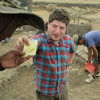
Sam Holzman, Academy of Pennsylvania
Tortoise Shell Lyres from Gordion: the Domestic Context of Music and Ritual in 7th century Phrygia
The Phrygians, a people who flourished in central Anatolia during the showtime millennium B.C.E. had one of the richest and near influential musical cultures in antiquity. Despite the significance of Phrygian music, it is known nearly entirely through Greek and Roman texts and iconography, which give the impression that the aulos was preferred to such an extent that stringed instruments were excluded. The archaeological discovery of tortoise shell lyres in a house from the offset quarter of the 7th century B.C.E. at the Phrygian capital Gordion clarifies the sound and instrumentation of music in Phrygia. Stone figurines in related contexts prompt the further conclusion that lyres accompanied domestic worship of the goddess Matar, the Phrygian predecessor of Cybele. More finds of lyre fragments in residential zones of the site suggest that the household was a key environment for musical evolution in Phrygia. In comparison to the common mold-made figurine blazon of Cybele with a tympanum, which is known from a house at Gordion during the Hellenistic period, we may infer some continuity of domestic music ritual for Cybele at Gordion despite changes in instrumentation and the materiality of figurines over a 500-twelvemonth period.
Sam Holzman is a graduate student in the Ph.D. program in the Art and Archaeology of the Mediterranean World (AAMW) at the University of Pennsylvania. Sam received his B.A. in Classics and Archaeology from Brown Academy and an Thousand.Phil. in Classics from the University of Cambridge. He excavates in Greece and Turkey as a member of the Molyvoti, Thrace Archaeological Project and the Gordion Archaeological Project. In 2014, he completed an Thou.A. thesis at Penn on the tortoise beat lyres from Gordion, for which he received 3rd prize in the MOISA research award for an One thousand.A. thesis in English or Italian on Greek and Roman music and its cultural heritage. .
E-mail: sholzman@sas.upenn.edu

Gioconda Lamagna, "Paolo Orsi" Regional Archaeologica Museum of Siracusa, Italy
Terracottas with Representations of Musicians from Adranon (Siciliy)
Amid the rich and diversified coroplastic production of Adranon (the aboriginal city in the Simeto valley founded by Dionysius the Elderberry from Syracuse, according to the historical tradition), are a number of figurines with representations of musicians dating to between the fourth and the beginning of the third centuries BCE, now housed in the local regional museum. These are statuettes featuring a woman playing the aulos or tympanon, likewise every bit pocket-size pinakes with three standing figures, often interpreted as nymphs, besides portrayed in the human action of playing an instrument. The circumstances of the discovery of a number of these terracottas remain unknown. Their assumed origin from the ancient town of Adranon is likely but non sure.
There is only one pinax coming from a sufficiently documented context. It was part of a votive deposit related to the cult of Demeter and Kore found, betwixt Dec 1913 and January 1914, in the courtyard of the former Monastery of Jesus and Mary near the main foursquare of the modern town. This pinax is now in the Paolo Orsi Regional Archaeological Museum in Syracuse.
Finally, another related group of terracottas comes from excavations carried out in recent decades in the expanse of the aboriginal settlement itself. This set of materials provides the nearly interesting information towards a proper contextualization of the terracottas as a whole.
This poster is therefore aimed at updating scholarship on the Adranon terra cotta corpus, presenting some unpublished samples coming from the excavations of 1995. At the aforementioned time, analyzing the known and supposed contexts of discovery, 1 can establish the possible relationships betwixt this class of terracotta figurines and the cults skilful at aboriginal Adranon.
Gioconda Lamagna began her career at the Archaeological Superintendency of Salerno, Avellino, and Benevento, dealing with the protection and the investigation of several Samnite centers, including ancient Caudium.Later beingness transferred to the Cultural Heritage Superintendency of Catania, she was in charge of managing the regional museum of Adrano for many years, including its recent, new installation.During her years at the Superintendency of Catania she has also dealt with the protection and the scientific investigation of several sites in the province of Catania, supervising excavation campaigns in the Simeto valley (Greek city of Adranon, archaic indigenous centres of Mendolito, and Civita di Paternt) and in the Caltagirone area (Caltagirone, Monte Balchino, Piano dei Casazzi).She has taken part in various scientific seminars—both at the national and the international level—publishing extensively in scientific journals. She has too participated in multimedia publications, promoting also the realization of the official website for Adrano'south regional museum. From 2010 to 2013 she has been director of the "Parco archeologico della Valle del Simeto," and since the stop of 2013 she has been the managing director of the Regional Archaeological Museum Paolo Orsi at Syracuse.
E-mail: gioconda.lamagna@regione.sicilia.information technology

Lucia Lepore, Università di Firenze
Grotesque, Caricatured and Obscene Features in Greek Clay Sculpture
with Figures of Musicians and Dancers
In the excavation campaigns conducted past the University of Florence at the site of the Achaean colony of Kaulonía, under a collapsed Classic Period house, a terra cotta mold was institute of a nude, bald, grotesque graphic symbol with a slender effigy, highly emphasized genitalia and a semi-open up mouth, with a plectrum in his right hand and a kithara in his left. The bailiwick finds interesting comparison in a few examples, dating betwixt the 5th and 4th centuries B.C., from the Kabirion of Thebes, simply too from the Locride, Attica and from other places in Boeotia. These figures, which express a strong magical and propitiatory value, have important links to Hellenistic representations of similar caricatured, grotesque and besides obscene features, with a broader and more circuitous significant.
Lucia Lepore
-Researcher, now retired, University of Florence.
-Professor of Archeology of Magna Graecia and Methodology of Archeological Research, in the degree programs, the School of Specialization and Doctoral Studies.
-Representative of international agreements for cultural and scientific collaboration.
Collaborates with various institutions, is a member of Italian and foreign associations, has organized exhibits, seminars and conferences, among which most recently the archeological showroom "Kaulonia, the City of the Amazon Klete", Florence 2013-2014.
Direction and Research in the Field
-Partner and manager of the Temporary Association for Objectives created to fix in movement a project regarding the archeological surface area of Locri Epizefiri.
-Scientific Director of the digging campaigns conducted by the University of Florence in the locality San Marco of Monasterace Marina (Reggio Calabria); at Li Castelli di Manduria (Taranto); Fiesole (Florence); Antella (Bagno a Ripoli, Florence); and in Florence.
-Collaborator in the excavation campaigns conducted by the Archeological Superintendency of Calabria at Crotone, past the Archeological Superintendency of Tuscany at Artimino (Carmignano, Prato), Frascole (Dicomano, Florence), Castellina di Quinto (Sesto Fiorentino, Florence).
E-mail: lucia_lepore@yahoo.information technology

Aureola Piccioni, Institute of Classical Archaeology of Regensburg Academy
Cybele, Dionysus and the Tympanum: the Role of Musician in Ecstasy
A type of clay figurine from Taranto represents a continuing woman who holds a tympanum in her hand. This iconography may be interpreted as a female musician, like to those who, playing the tympanum, the aulos, or the cymbals, took role in the rites honoring the goddess Cybele that were widespread in ancient Italy. According to the myth, it was Dionysus himself who invented this musical instrument, in order to produce ecstasy in those who danced at its rhythm. The tympanum was used forth with the cymbals in the cult of the Magna Mater. Important attestations come from the sanctuary of Bitalemi, at Gela, from that of Malophoros, at Selinunte, and from the Palatine. The cult of Cybele was likely present also at Elea. To sympathise the importance of the tympanum in these rites, the ancient literary sources are helpful, as is Catullus (Carmina docta, 63). It appears that both tympanum and cymbals were instrumental in giving a Dionysian grapheme to these rites. In item, the Hellenistic clay figurines attest that the words of ancient authors are correct in stating that the tympanum was the "instrument of ecstasy" par excellence.
Aura Piccioni, after the graduation at the Academy of Roma Tor Vergata (2011), attended an advanced preparation class at the "Scuola Archeologica Italiana di Atene". She is currently undertaking her PhD study at the Plant of Classical Archaeology of Regensburg University, where she is developing a project regarding private cults in homes of archaic and classical times in southern Italy and Etruria (with the title: "Häusliche Kulte in Unteritalien und Etrurien") under the supervision of her doctoral adviser, Mr. Prof. D. Steuernagel; at the same time, she is research assistant at the chair of Prof. Steuernagel, preparing a catalogue of the archaeological collection owned by the University. She has attended equally a speaker conferences held at the Universities of Bonn, Regensburg, Breslau, Rome (Tor Vergata), Sydney, Heidelberg. Some of her essays are at the moment in press.
E-postal service: artemisia2006@tiscali.it

Angela Bellia, Department of Cultural Heritage, University of Bologna - Institute of Fine Arts, New York University
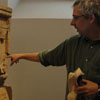
Clemente Marconi, Institute of Fine Arts, New York University
Source: https://ifa.nyu.edu/events/archeomusicology.htm
0 Response to "Ritual Warfare Depicted in Moche Art Was a Real Practice?"
Post a Comment